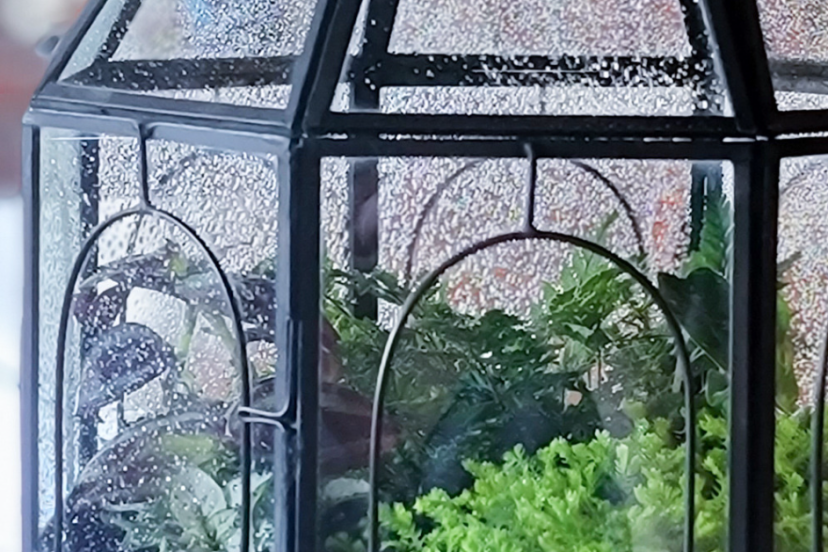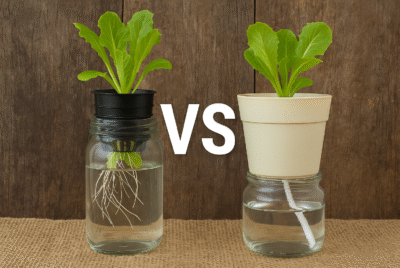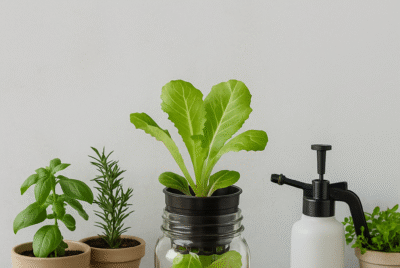Hydroponic Planter : Soil-less & No-mess
As someone who loves gardening but lives in an apartment with limited outdoor space, I’ve recently become interested in hydroponic planters. These innovative planters allow you to grow plants indoors without soil, using nutrient-rich water instead. Not only do hydroponic planters save space, but they can also help you grow plants faster and with less effort.
If you’re considering setting up a hydroponic planter, there are a few things to keep in mind. In this article, I’ll guide you through the process of choosing a hydroponic planter, setting it up, choosing plants, planting, caring for your plants, and harvesting. By the end of this article, you’ll be well on your way to becoming a successful hydroponic gardener.
Choosing a Hydroponic Planter
The first step in setting up a hydroponic planter is choosing the right one for your needs. There are a few different types of hydroponic planters to choose from, including deep water culture systems, nutrient film technique systems, and drip irrigation systems. Each type has its own benefits and drawbacks, so it’s important to do your research before making a purchase.
When choosing a hydroponic planter, consider factors such as the size of the planter, the materials it’s made from, and the type of plants you plan to grow. For example, if you’re planning to grow large plants like hydroponic tomatoes, you’ll need a larger planter with sturdy support. On the other hand, if you’re growing herbs or leafy greens, a smaller planter may be sufficient.
Personally, I recommend starting with a deep water culture system for beginners. These systems are relatively simple to set up and maintain, and they’re great for growing a variety of plants.
What Are the Benefits of Hydroponic Planters?
There are many benefits to using hydroponic planters for growing plants. Here are a few reasons why you might want to consider using this method:
Faster Growth and Higher Yields
Hydroponic planters provide plants with the nutrients they need to grow quickly and produce high yields. Since the plants are not competing with other plants for nutrients, they can focus their energy on growing. Additionally, hydroponic planters can be designed to provide plants with optimal growing conditions, such as the right amount of light and moisture, which can further increase growth rates.
Saves Space and Water
Hydroponic planters are perfect for those who don’t have a lot of outdoor space. They can be set up indoors or outdoors, and take up very little space. Since the plants are grown in water, there is no need for soil, which can save a lot of space. Additionally, hydroponic planters use less water than traditional soil-based gardening, as the water is recycled through the system.
No Weeds, Less Pests
One of the biggest advantages of using hydroponic planters is that they are virtually weed and pest-free. Since there is no soil, there are no weeds to compete with the plants for nutrients. Additionally, hydroponic planters can be covered with netting to prevent pests from getting to the plants.
How to Set Up Hydroponic Planters
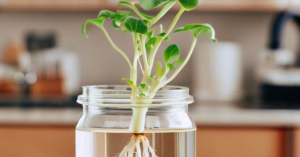
Now that you know the benefits of hydroponic planters, let’s discuss how to set them up. Here are the steps to follow:
Step 1: Choose the Right Planter
The first step in setting up a hydroponic planter is to choose the right one for your needs. There are many different types of hydroponic planters available, including vertical systems, floating systems, and drip systems. Consider your space, budget, and the type of plants you want to grow when choosing a planter.
Step 2: Add Growing Medium
Once you have chosen your planter, you will need to add a growing medium. Some common options include perlite, vermiculite, and coconut coir. The growing medium provides support for the plants and helps to maintain moisture levels.
Step 3: Set Up the Reservoir
The next step is to set up the reservoir. This is where the nutrient-rich water will be stored and circulated through the system. Make sure the reservoir is large enough to hold enough water for your plants, and consider adding an air stone to help oxygenate the water.
Step 4: Install the Pump
You will need a pump to circulate the water through the system. Install the pump in the reservoir and attach it to the tubing that will transport the water to the planter.
Step 5: Add Nutrients
Add hydroponic nutrients to the water in the reservoir. These nutrients are essential for the plants to grow and produce healthy yields.
Step 6: Add Plants
Now it’s time to add your plants to the planter. Make sure they are positioned correctly in the growing medium, and adjust the tubing to ensure they are getting enough water.
Step 7: Monitor and Maintain
Finally, you will need to monitor and maintain your hydroponic planter. Check the pH and nutrient levels regularly, and adjust as necessary. Also, make sure the water is circulating properly and that the plants are getting enough light.
Connect the Water Pump and Set Timer
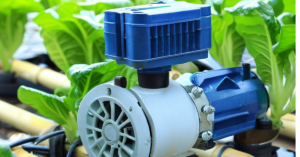
Next, I connected the water pump to the tubing and set the timer. The timer controls when and for how long the water pump runs. In most cases, hydroponic plants should receive water and nutrients for a few minutes several times a day. Setting up the timer ensures that the plants get the right amount of water and nutrients consistently, without overwatering or underwatering them.
Add Plants and Nutrients
After setting up the water pump and timer, it was time to add plants and nutrients. I carefully placed the plants into the net pots, making sure that the roots were fully covered by the hydroponic growing medium. Then, I filled the reservoir with the nutrient solution. Depending on the type of plants and the stage of growth, different nutrient solutions may be required. It’s important to follow the manufacturer’s instructions for the specific nutrient solution to ensure optimal plant growth.
Monitor and Adjust
Finally, I monitored the hydroponic planter regularly to ensure optimal plant growth. I checked the pH and nutrient levels regularly to make sure they were within the appropriate range. If the pH or nutrient levels were off, I adjusted them accordingly. I also checked for any signs of pests or diseases, and addressed them immediately to prevent damage to the plants.
Choose the Right Hydroponic System for Your Needs
There are various types of hydroponic kits available, each with its pros and cons. Therefore, it’s essential to choose the right one for your needs, depending on factors such as your budget, the size of your plants, the space available, and the amount of time you want to spend on maintenance.
One of the simplest hydroponic systems is the deep water culture system, which involves suspending plants in a nutrient-rich solution and aerating the water with air pumps. This system is low-cost, easy to set up and maintain, and suitable for a wide range of plants.
Another popular system is the nutrient film technique, which uses a continuous flow of nutrient solution through a narrow channel or tube, allowing the roots to absorb the nutrients they need. This system is ideal for small plants like herbs and lettuce, as it requires less water and nutrients than other systems.
The ebb and flow system is another popular hydroponic system that involves flooding the plant roots with nutrient solution and then draining it away. This system is suitable for a wide range of plants and can be customized to suit your space and plant size.
Set Up Your Hydroponic Planter
Once you’ve chosen the right hydroponic system for your needs, it’s time to set up your hydroponic planter. Here are the steps you need to follow:
First, clean the hydroponic system thoroughly and remove any dirt or debris that might interfere with plant growth.
Second, fill the system with the nutrient solution and making sure to follow the instructions provided with your hydroponic system.
Third, install the air pump if you’re using a deep water culture system. This will help to oxygenate the water and keep the plant roots healthy.
Fourth but not least, Install the growing medium. Depending on the hydroponic system you’ve chosen, you might use a medium such as clay pellets, coconut coir, or rockwool cubes.
Fifth, plant your seedlings or seeds, making sure to follow the instructions provided with your hydroponic system. You might need to adjust the pH level of the nutrient solution to suit your plants.
Sixth: Set up the lighting system if you’re growing plants indoors. You’ll need to provide your plants with at least 12-16 hours of light per day, depending on the type of plant you’re growing.
Mastering Hydroponics Planter
5 Essential Tips for Success
Tip 1: Monitor the nutrient solution regularly and adjust the pH level as needed. You should also check the nutrient levels to make sure your plants are getting the right balance of nutrients.
Tip 2: Keep the water aerated if you’re using a deep water culture system. This will help to oxygenate the water and prevent root rot.
Tip 3: Monitor the temperature and humidity levels in your grow room or greenhouse. Most plants prefer a temperature range between 65-75°F and humidity levels between 50-70%.
Tip 4: Inspect your plants regularly for signs of pests or disease. If you notice any problems, take action immediately to prevent them from spreading.
Tip 5: Prune your plants regularly to encourage healthy growth and prevent overcrowding. You should also remove any dead or damaged leaves or stems to prevent the spread of disease.
Conclusion
Setting up a hydroponic planter is a great way to grow healthy and delicious plants in a small space. Whether you’re an experienced gardener or a beginner, hydroponic planters can provide an easy and efficient way to grow your favorite plants without soil. By following the steps outlined in this guide, you can set up your own hydroponic planter and enjoy fresh, home-grown produce in no time. Grow vegetables all year long.
FAQs
1. What plants can I grow in a hydroponic planter?
Hydroponic planters can support a wide variety of plants. Leafy greens like lettuce, spinach, and kale, as well as herbs like basil, parsley, and mint, are popular choices. You can also grow tomatoes, cucumbers, peppers, strawberries, and even some flowering plants.
2. How often should I change the nutrient solution in a hydroponic planter?
The frequency of changing the nutrient solution depends on various factors such as the size of the planter, the type of plants being grown, and the nutrient requirements. As a general guideline, it is recommended to change the nutrient solution every 1-2 weeks to ensure optimal plant health and nutrient balance.
3. Do I need to use grow lights with a hydroponic planter?
While not always necessary, grow lights are often used in hydroponic planters to provide adequate light for plant growth, especially in indoor settings or areas with limited natural sunlight. Grow lights help ensure that plants receive the required amount and quality of light for photosynthesis.
4. Can I reuse the hydroponic growing medium?
It depends on the type of growing medium used. Some common hydroponic growing mediums, such as rockwool, coco coir, and perlite, can be reused after proper cleaning and sterilization. Others, like vermiculite or expanded clay pebbles, may need to be replaced as they can be difficult to clean effectively.
5. Is it difficult to set up a hydroponic planter?
Setting up a hydroponic planter can be relatively easy, especially with the availability of pre-designed systems and kits. However, it does require some basic knowledge and understanding of hydroponic principles, such as nutrient solutions, pH levels, and water circulation. With proper research, guidance, and attention to detail, most enthusiasts can successfully set up and maintain a hydroponic planter.
*We may earn a commission from purchases made through our links, at no cost to you. This does not affect our product recommendations. Please see our disclosure to learn more.

